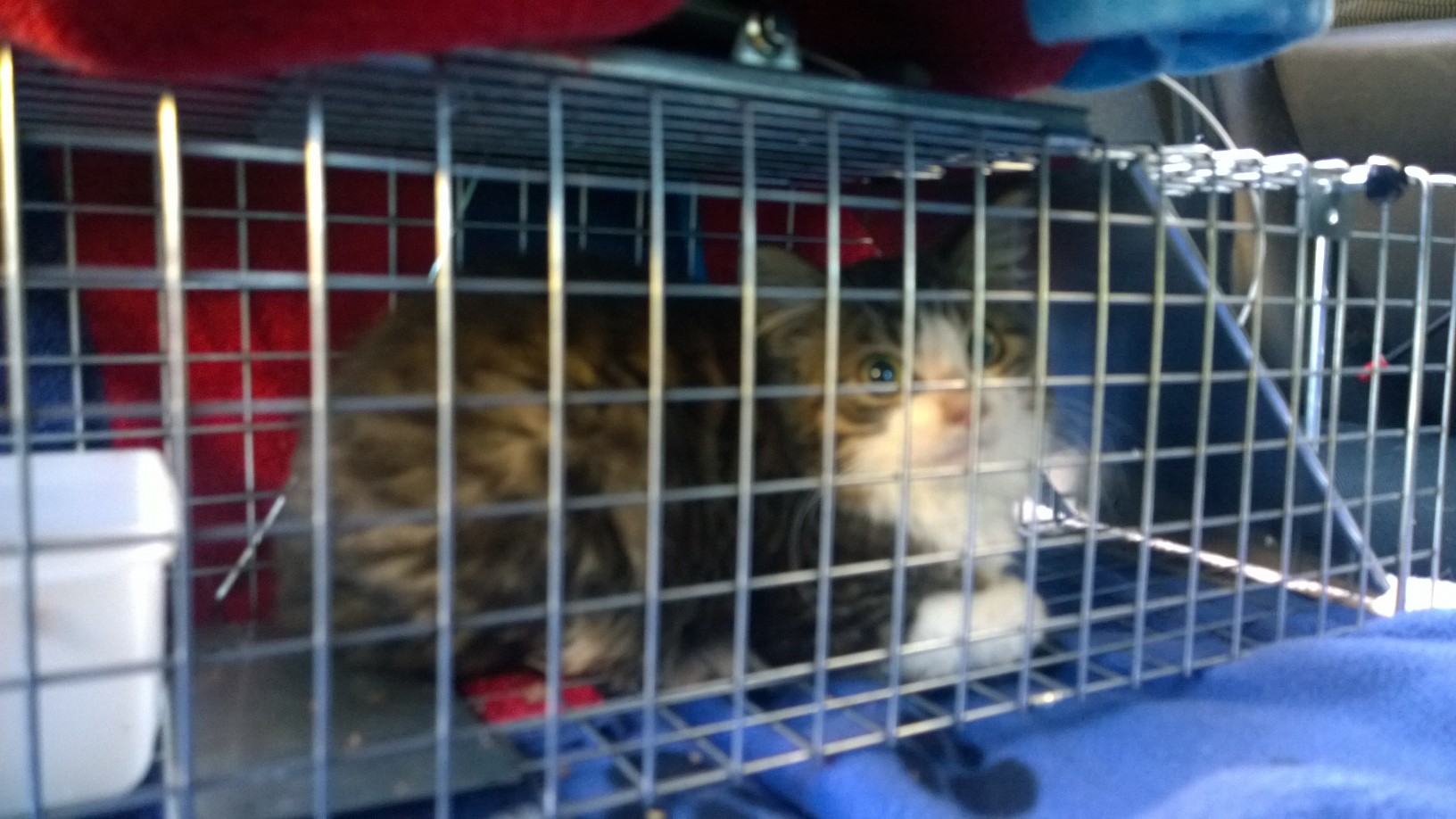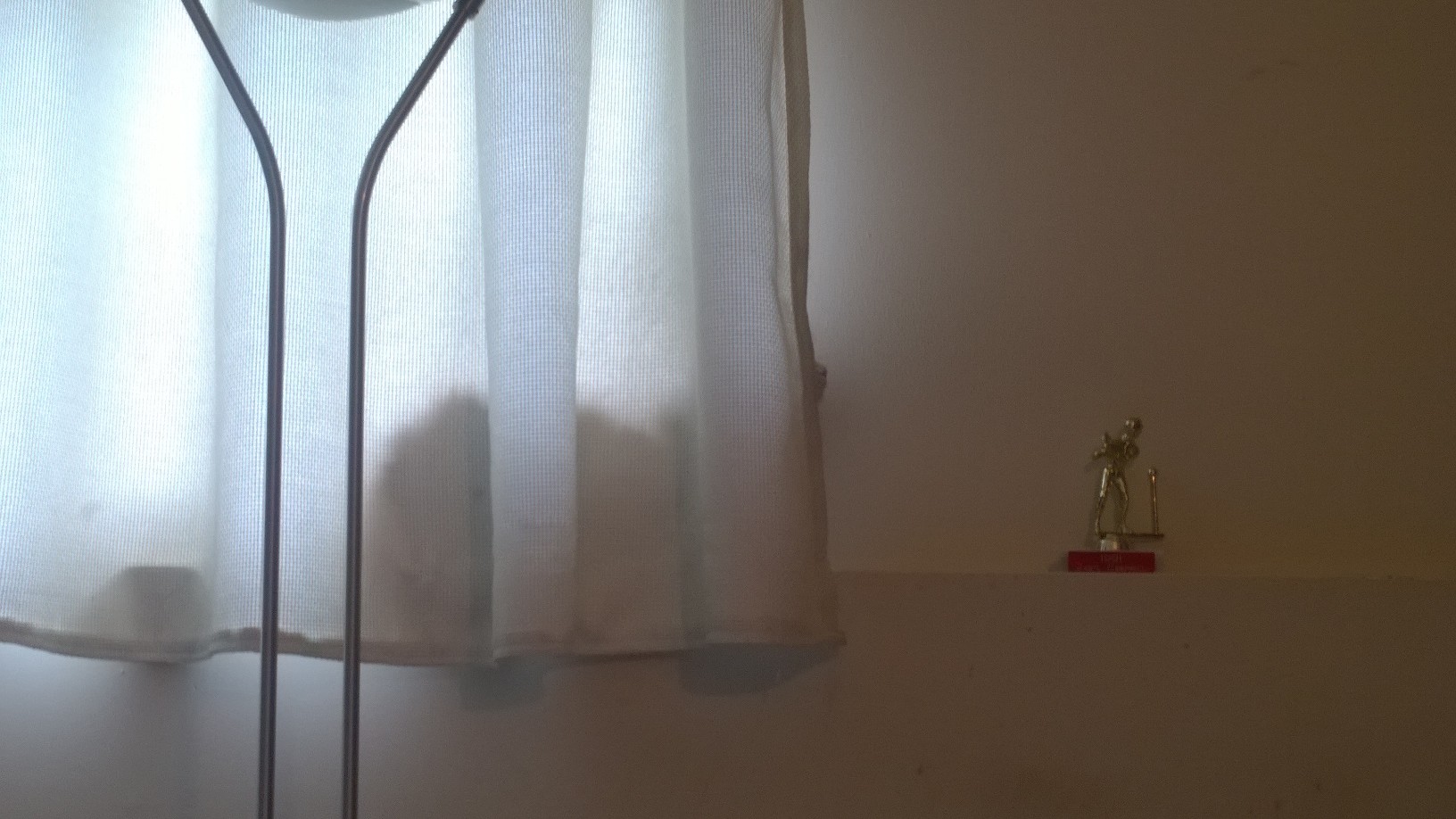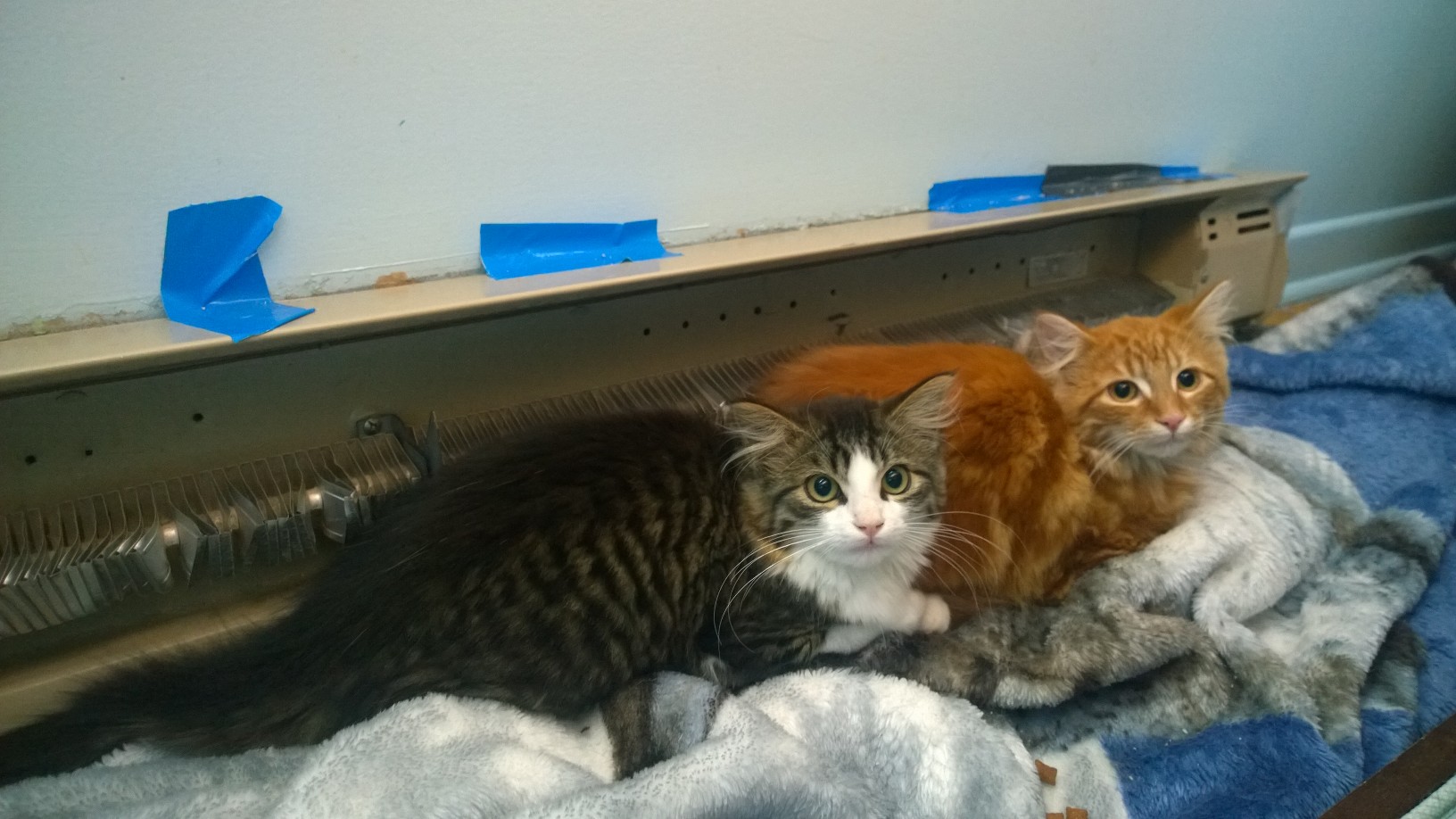My family has fostered many cats. Typically, we’ve zeroed in on declawed adults (which is a story for another day) and kittens, either full litters or lonely orphans. The kittens we’ve taken in have always either just the right age for adoption or even younger, easy to socialize and mould into lovable personalities. This summer, we tried something different. We tried working with ferals.

So what constitutes a “feral”? I see the word thrown around a lot, even among other animal rescuers and veterinary professionals who should know that this is a risky word to use. Ferals are the unadoptables of the world, the pests who wander neighbourhoods and reproduce year-round—and if humans catch them they’re labelled “aggressive” and often euthanized because they will claw and bite their way out of human grip. If ferals are anywhere past 4 months old they are essentially a lost cause; in the best of situations they’ll be caught by someone aware of TNR (trap-neuter-return) programs and get to live out their lives outdoors. If feral kittens are younger, they have a chance to be socialized. A former coworker described feral kittens as “popcorn kittens”, because if a human reaches towards them they jump around like popcorn kernels popping in an effort to escape.

This past summer, my family took in two feral kittens on the tail end of their socialization period; they were right around that 4 month mark where popcorn kittens turn into lost causes. The only human interaction they had experienced up until that point in their lives was the morning and evening routine of receiving bowls of delicious canned food from a kindhearted, animal-loving couple. My mother and I visited this couple’s house several mornings in a row mid-July. Day one we tried to capture the kittens the nice way, coaxing them into a regular pet carrier with food and then shutting the door behind them. The braver kitten indeed went into the carrier, but when I tried to sneak up to close the door, he spotted me and dashed out—trust broken. Day two we resorted to a trap cage, and once again it was the braver kitten who took the bait. Of course, seeing his brother get trapped, the more skittish and larger kitten would not go all the way into the second trap cage on that day. Day three we brought a larger trap cage for the remaining kitten, and he too was caught. Rather than bringing these kittens directly into the animal shelter where they would not receive the extensive socialization that they needed, we opted to give them a chance as foster cats in our home. It was a slim chance, but better than they would get elsewhere.
 Despite our years of experience in fostering, we got off to a horrible start with our pair of ferals. Our usual foster room (a small spare bedroom with minimal potential for getting into trouble) was occupied by a mama cat and her three kittens, so we set the newly-acquired brothers up in our basement. Now I can’t speak for all basements, but…it isn’t unusual for basements to be storage space for all manner of junk and things you aren’t using but can’t bear to part with, right? That’s what our basement is like, in any case. So unsurprisingly, as soon as the kittens were left to explore their new living quarters, they found the most obscure hiding spaces. First it wasn’t that bad, with the Little One (as we called him until we reached the point of a vet visit) setting up underneath a bed, and Big Red staying frozen behind the window’s curtains. But then they found new, better hiding places: behind the old CRT television, inside the underside of the couch, precariously balanced on a dog crate that was folded behind a bookcase…this was NOT going to work. Not only could we not see the cats, but they couldn’t see us! Part of the socialization process is just teaching these animals that humans mean them no harm. We wanted to just spend time in the room, watching TV and ignoring the kittens so they could see we weren’t constantly on the hunt for them; this did not work if the kittens were off sandwiched in the two-inch space between a cabinet and the wall.
Despite our years of experience in fostering, we got off to a horrible start with our pair of ferals. Our usual foster room (a small spare bedroom with minimal potential for getting into trouble) was occupied by a mama cat and her three kittens, so we set the newly-acquired brothers up in our basement. Now I can’t speak for all basements, but…it isn’t unusual for basements to be storage space for all manner of junk and things you aren’t using but can’t bear to part with, right? That’s what our basement is like, in any case. So unsurprisingly, as soon as the kittens were left to explore their new living quarters, they found the most obscure hiding spaces. First it wasn’t that bad, with the Little One (as we called him until we reached the point of a vet visit) setting up underneath a bed, and Big Red staying frozen behind the window’s curtains. But then they found new, better hiding places: behind the old CRT television, inside the underside of the couch, precariously balanced on a dog crate that was folded behind a bookcase…this was NOT going to work. Not only could we not see the cats, but they couldn’t see us! Part of the socialization process is just teaching these animals that humans mean them no harm. We wanted to just spend time in the room, watching TV and ignoring the kittens so they could see we weren’t constantly on the hunt for them; this did not work if the kittens were off sandwiched in the two-inch space between a cabinet and the wall.
My mother and I made it our mission to cover up every single nook and cranny the kittens could hide in. We boarded off the underside of beds and couches, placed boxes and taped cardboard along the bottom of tables and dressers…yes, we certainly had everything covered. Now those kittens would be hard-pressed to escape our line of vision! So we shut the kittens up for the night feeling pretty good about ourselves.
And then things got WORSE. The next morning, only two days after having been captured, the Little One went missing. He who had until this point been the easiest to spot was absolutely nowhere to be found. We turned the basement room upside-down, tore down all of our efforts to cover hiding places, and still there was no sign of the smaller, braver kitten. It wasn’t until late that evening that there was a feral kitten sighting…upstairs. How could that be? The basement door was shut tight! And that was when we realized a very significant oversight. You see, the doorway of our basement living room is slightly taller than the door. No more than three inches taller, but regardless, that means that there is a tiny gap above the door that a very determined 4 month old kitten could probably squeeze through. Honestly, I was more impressed by the fact that he somehow climbed the wall to reach the top of the doorframe. It seemed hard to believe.
This is where I’m going to share an anecdote that people will politely nod at with feigned belief whenever I tell it, because it is so ridiculous. But I assert to all of you in Montreal Dog Blog land: IT IS TRUE. On the second night after the Great Escape, I heard two cats scheming and making a getaway. You see, my bedroom is directly across from the basement living room, where Big Red was still locked up. At some point in the dead of night, I woke up from some scratching sound against wood, and then heard a lot of chatting going on between brothers. “Prrow prr” one would say. “Mewww” the other would say. I made a mental note that the theory that cats only meow to communicate with humans is pure nonsense, and then continued listening… There was scratching once again, a clamour followed by a thunk! on my side of the failure of a door. Then “prrr, prr!”, which I’m pretty sure translates into, “C’mon bro, you can do it too!” And he did it: more scratching, a lot more than the first kitten who was much smaller, and then the thunk! of a landing. And then silence as they slunk off into the night.

Leaving these two kittens to hide all day and roam at night was not the way to socialize them. They were already at the final crucial weeks of the socialization period, so we had to catch them fast and set them up in an environment conductive to human interaction. I won’t go into too much detail, but after a poor life decision by one kitten, telltale noises from the other, and a bite wound on my dad’s hand, the kittens were captured. Our older foster tenants were moved into the basement room, since we could trust them not to go into hiding, and the two ferals were confined to our regular foster room upstairs.
Creating a proper space was a hugely important first step in our socialization efforts. The bedroom worked well for these brothers for several reasons: it was large enough that they could keep a safe distance from humans whenever we came in, it had a window and toys and other environmental enrichment, it did not have nooks and crannies to hide in, and most importantly of all…no escape routes!

The next step of our challenge was learning how to interact with the kittens in a way that would familiarize them with humans without overwhelming them—and this will be the topic of my next post, which will be Lesson 2 of Socializing Feral Cats: Give ‘Em Time, Food, and Personal Space.
 Montreal Dog Blog Montreal's Online Dog Park
Montreal Dog Blog Montreal's Online Dog Park




